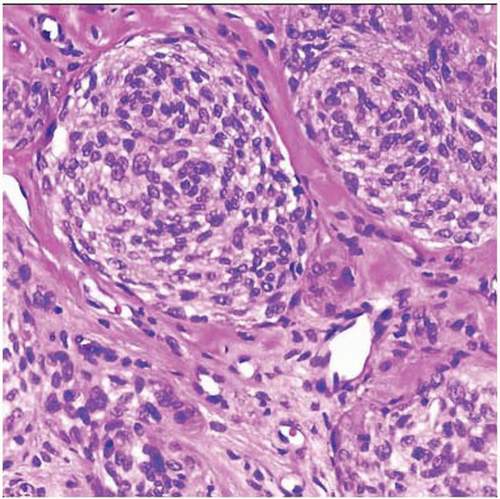Plexiform Fibrohistiocytic Tumor
Julie C. Fanburg-Smith, MD
Aaron Auerbach, MD
Key Facts
Terminology
Borderline tumor of fibrohistiocytic phenotype with histiocytic and osteoclast-type giant cells rich; cannonball-like pattern &/or spindled fibroblastic pattern, involving dermis and subcutis in infiltrative growth pattern and sparing adnexa
Microscopic Pathology
Dermal subcutaneous border
Infiltrative growth pattern
Cannonball growth pattern
Histiocytic with osteoclast type giant cells
Fibroblastic, spindled
SMA(+) fibroblastic
CD68 (+) histiocytic
Top Differential Diagnoses
May be on spectrum with cellular neurothekeoma
PFHT involves subcutis rather than just dermis
PFHT on extremities and trunk rather than face
 Hematoxylin & eosin shows plexiform fibrohistiocytic tumor (PFHT) at the dermal subcutaneous interface with a plexiform appearance. Note the extensions into the dermis and subcutis. |
TERMINOLOGY
Abbreviations
Plexiform fibrohistiocytic tumor (PFT/PFHT)
Synonyms
Debatably deep form of cellular neurothekeoma
Definitions
Borderline tumor of fibrohistiocytic phenotype involving dermis and subcutis in infiltrative growth pattern, sparing adnexa
CLINICAL ISSUES
Epidemiology
Incidence
Rare
Age
Children and young adults
Range: 1-77 years; median: 20 years
Gender
Slight male predominance
Site
Upper extremity is most common site
Followed by lower extremities and trunk
Stay updated, free articles. Join our Telegram channel

Full access? Get Clinical Tree



